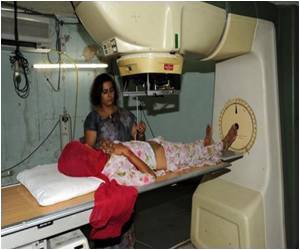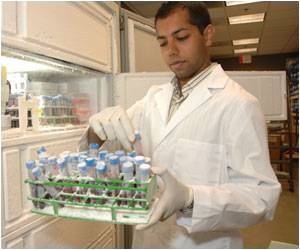Scientists by using deep molecular analysis of 131 muscle-invasive bladder cancer tumors found recurring defects in 32 genes for the cancer that currently has no targeted therapies.

"While many of these genomic alterations have been tied to other cancers, nine of these genes have never been reported as significantly mutated in any other type of malignancy," Weinstein said. "These findings mark additional progress away from defining cancer by organ site and toward molecular classification that spans tumor types."
Basis for investigating novel therapies and new uses of existing drugs
The most common bladder cancer, urothelial carcinoma, will kill an estimated 15,000 Americans in 2014, with 10 times as many deaths worldwide. Muscle-invasive disease is the most lethal form. Current treatment includes surgery, cisplatin-based multi-agent chemotherapy and radiation.
"These TCGA data provide a perfect storm for advancing treatment for muscle invasive and hard-to-treat cancer," said project co-leader and co-senior author Seth P. Lerner, M.D., professor and chair of Urologic Oncology and Bladder Cancer program leader at Baylor College of Medicine in Houston.
"We found potential therapeutic targets in 69 percent of tumors and identified bladder cancer subtypes based on gene mutation and expression data," Lerner said. "One subtype looks similar to squamous cell cancer of the head, neck and lung and basal-like breast cancer. Another subtype looks similar to luminal A breast cancer. These genomic similarities create a logical path to test targeted therapies from these other subtypes of cancer rather than treating bladder cancers as one disease."
Advertisement
Researchers analyzed tumors for genetic mutations, gene copy number (deletions and amplifications), gene expression of messenger RNA, microRNA and protein expression, among other factors.
Advertisement
- 45 percent of tumors had targets in the growth-factor-signaling receptor tyrosine kinase/MAPK pathway, including HER2 – best known as a drug target in about one third of breast cancers – in 15 percent of tumors, EGFR in 9 percent and FGFR3 in 17 percent.
- 42 percent had targets in the PI3K/AKT/mTOR pathway, including PIK3CA, which occurred in 17 percent of tumors, TSC1 or TSC2 in 9 percent and AKT3 in 10 percent of tumors. PI3K inhibitors are under development and mTOR inhibitors have been approved for select cancers.
A striking new finding, Weinstein said, was of frequent alterations in genes involved with the regulation of chromatin, the combination of DNA and histone proteins that makes up chromosomes.
Chromatin remodeling greatly influences gene expression and the team found alterations in this pathway in 89 percent of tumors, more than in any other type of cancer analyzed to date. This makes bladder cancer a prime candidate for a new class of drugs under development, the authors noted.
Viral DNA was found in 6 percent of tumors, suggesting that viral infection might play a role in the development of a small percentage of bladder cancers.
More to come
"Bladder cancer investigators now have access to an enormous amount of data that they can dive into for hypothesis testing, validation and translational research," Lerner said.
Over 700 tumor samples were received by Dec. 31, and all of those passing the rigorous quality control will be processed and analyzed, potentially tripling the sample size, Weinstein said.
Source-Eurekalert















